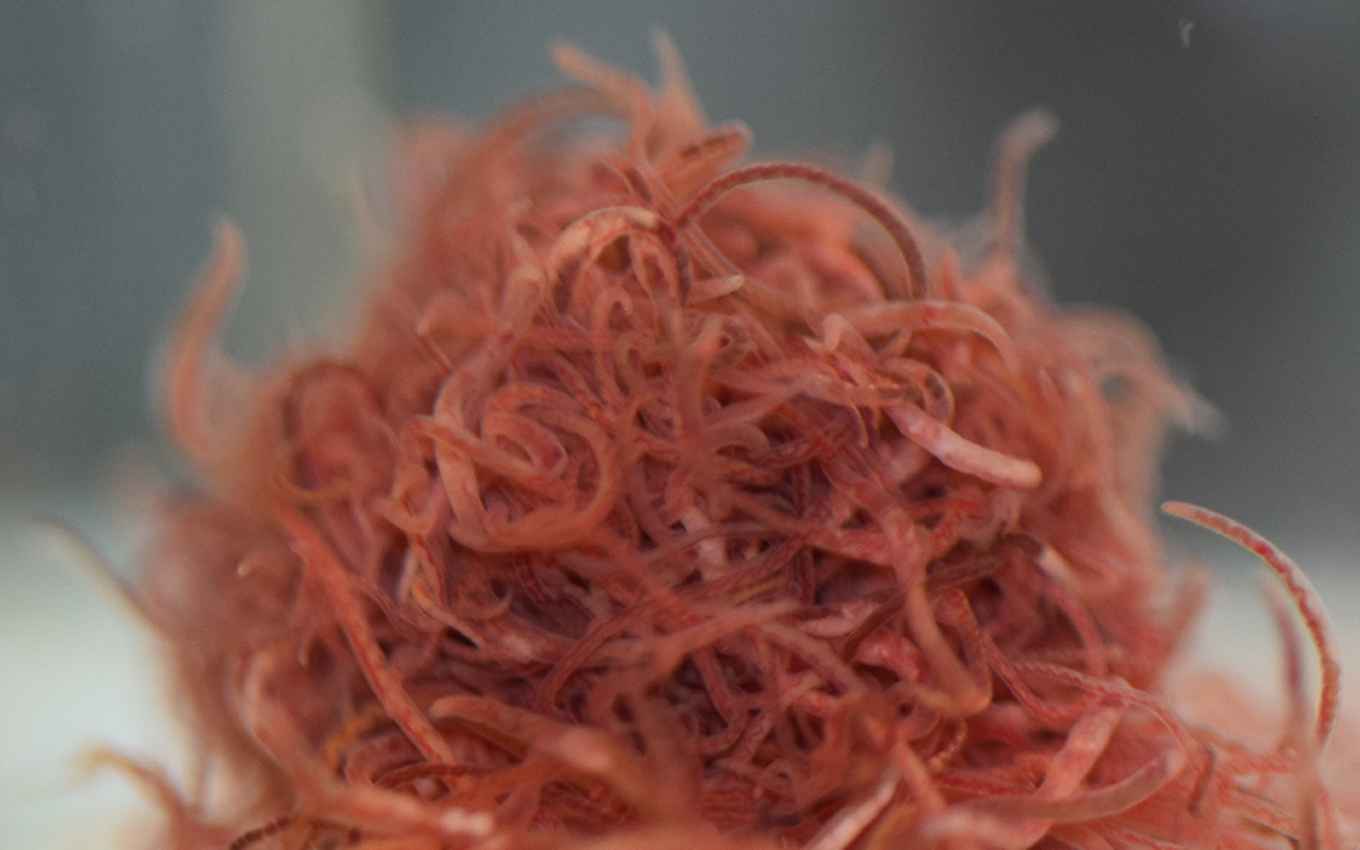The surprising viscosity of entangled worms
Active motion of worms may help develop new polymer physics
26 May 2020

Tubifex worms are thin, wiggling creatures that look somewhat like polymer molecules - at least in the eyes of physicist Daniel Bonn and physical chemist Sander Woutersen. In a series of experiments carried out together with postdoc researcher Antoine Deblais, the two professors explored whether the behaviour of large numbers of the slender worms would resemble the physics of polymers. Their sample was easy to get: Tubifex worms (less than half a millimetre thick, and one to two centimetres long) are used as food for aquarium fish and can be bought in any pet shop. As a matter of fact, the research started out as a Friday-afternoon experiment because Woutersen remembered the worms from his teens when he had an aquarium himself.
Spontaneous organization
When the worms are released in an aquarium, they tend to entangle spontaneously and form blobs. These blobs coalesce, and eventually the entire set of worms ends up in one big blob. This behaviour is quite similar to so-called phase separation in physics, where molecules that attract each other assemble in ever-larger aggregates. A well-known example of the latter is the growth of dewdrops on a surface. However, experiments on the worms revealed that their 'blob growth' is much faster than growth rates observed (and theoretically predicted) in droplet coalescence. The researchers explain this in terms of the active motion of the worms, which causes the growing blobs to move randomly with an average speed that is independent of blob size. This differs from droplet coalescence, where bigger drops move slower than small ones.

Worm viscosity
The next surprise came when the researchers found that a worm blob behaves like a viscous liquid. Just like a drop of liquid, the blob has a measurable surface tension, and it shows resistance if it is deformed by means of a gentle shear force. The video below (slowed down by 2x) shows how a standard viscosity-measuring device was used to study a solution of sludge worms in various states of activity.In the case of entangled polymer molecules, in such experiments a “shear-thinning effect” can be observed where a polymer solution becomes less viscous when more deformation is applied. This is because the polymers tend to align with the flow. Surprisingly, in the case of the “worm-blob” substance, the shear-thinning effect is dramatically reduced. The researchers again explain this in terms of the active motion of the worms, that prevents them from aligning with the flow.
Inspiration for a new theory
Since the active motion of the worms appears to be essential for both blob growth kinetics and shear thinning, the Amsterdam researchers think their study can provide inspiration to developing the physics of “active matter” consisting of large assemblies of actively-moving entities. This is currently an active research field worldwide, but so far experiments have only been reported on point-like particles, and very little is known about active polymers. The UvA researchers hope their work will help theorists to develop the theory for this new class of active matter.
Publication details
A. Deblais, S. Woutersen, and D. Bonn, “Rheology of Entangled Active Polymer-Like T. Tubifex Worms”, Physical Review Letters 124, 188002 (2020). DOI: 10.1103/PhysRevLett.124.188002
A. Deblais, A. C. Maggs, D. Bonn, and S. Woutersen, “Phase Separation by Entanglement of Active Polymerlike Worms”, Physical Review Letters 124, 208006 (2020). DOI: 10.1103/PhysRevLett.124.208006
Read more
A detailed explanation of the viscosity experiments can be found in a highlight on the website of the American Physical Society: Worm Viscosity.